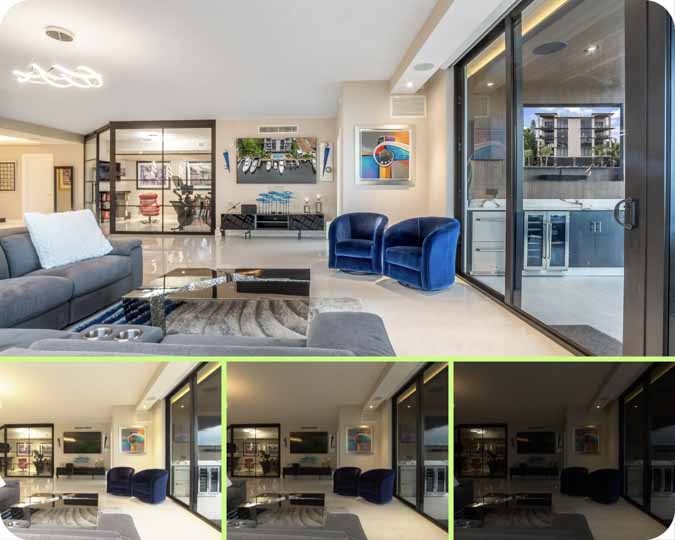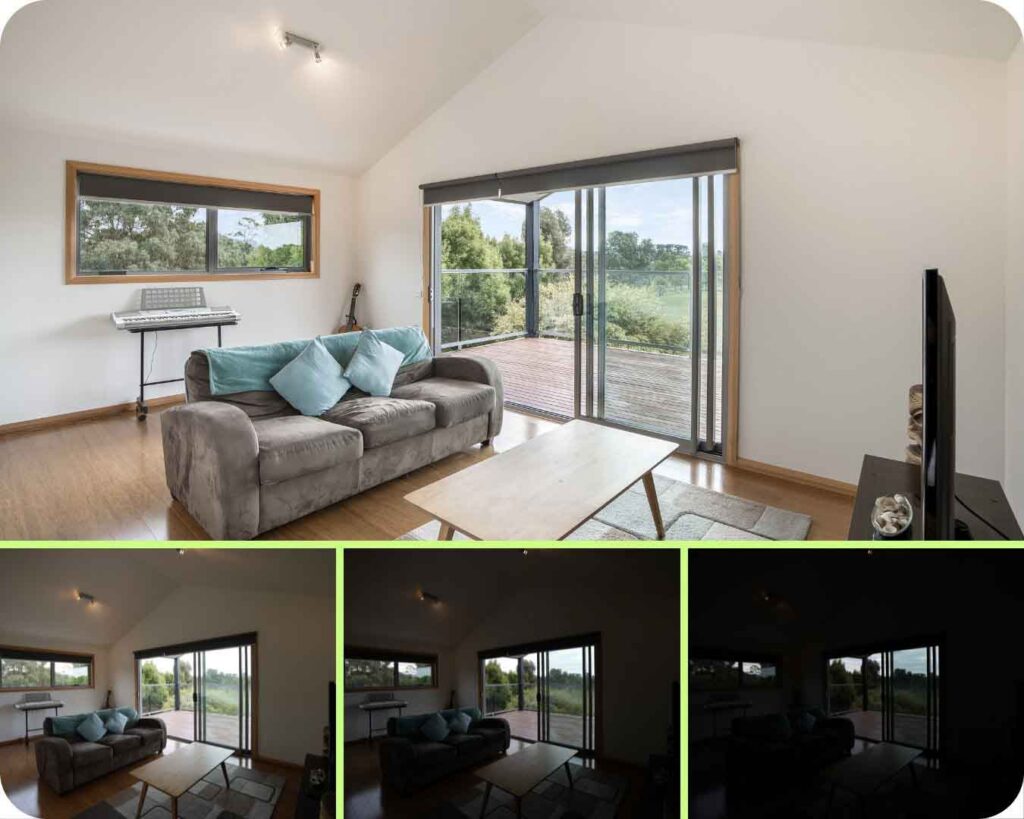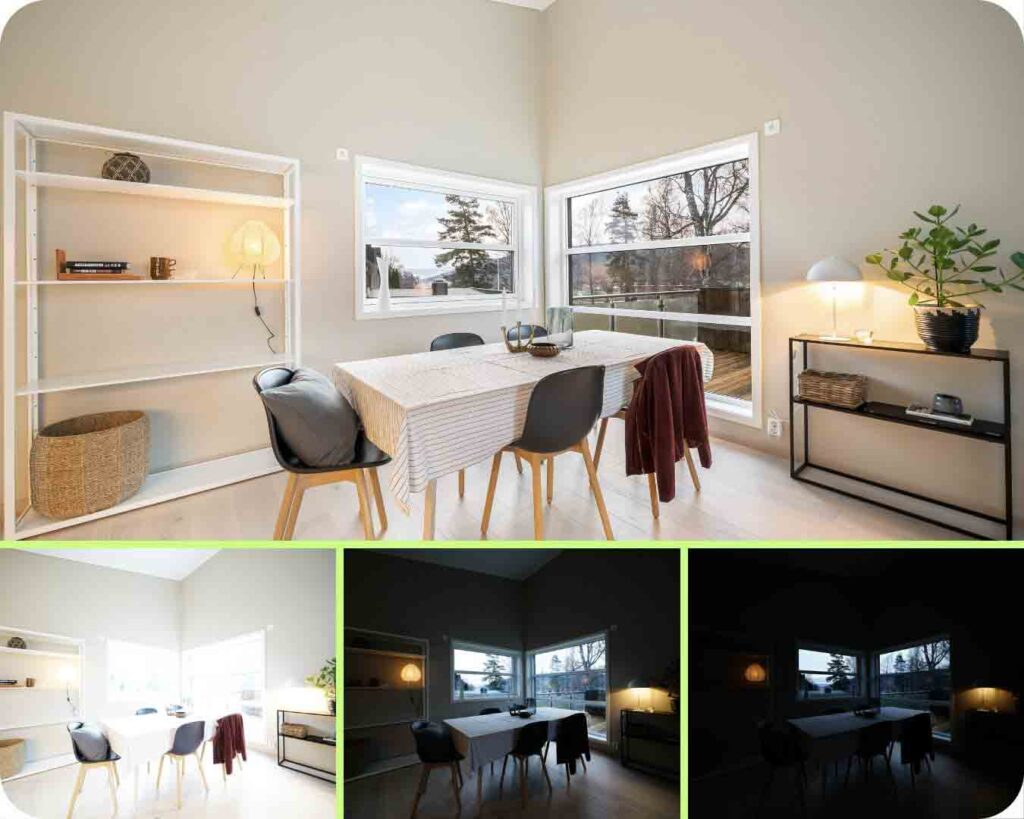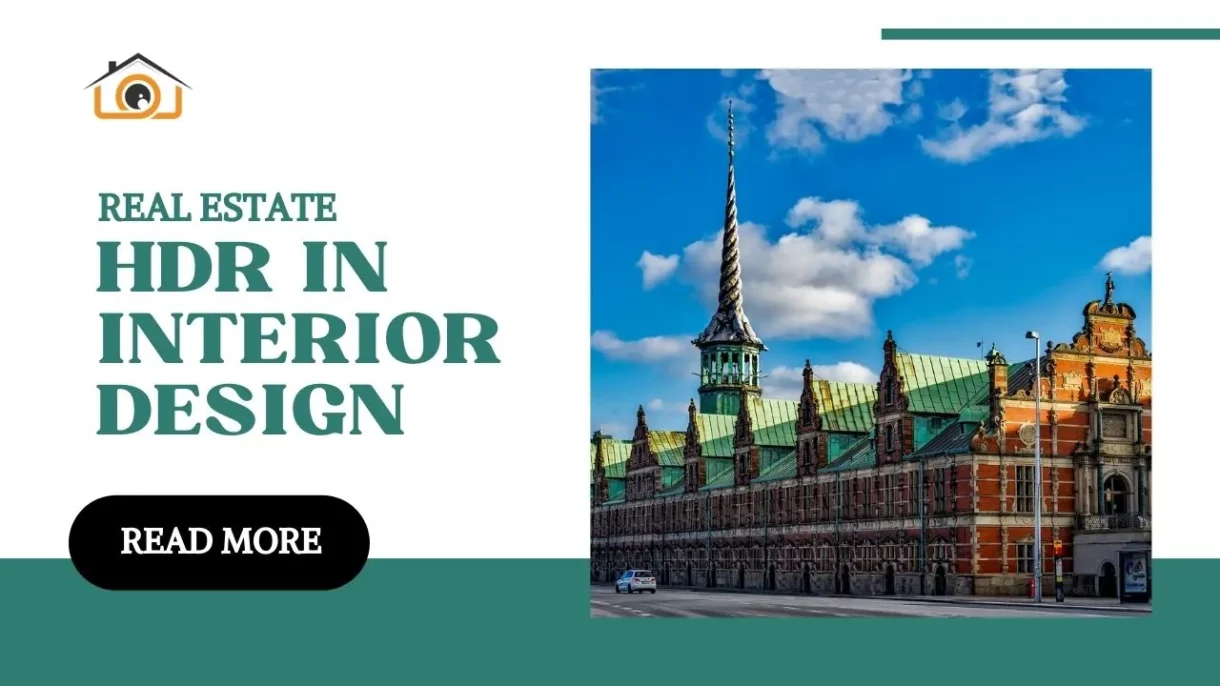HDR in Interior Design: Enhancing Interiors with HDR
HDR in Interior design has come a long way in recent years with advancements in technology. One of the most important developments in technology in photography and cinematography is High Dynamic Range (HDR). HDR technology allows for greater detail, color accuracy, and dynamic range in images, resulting in a more vibrant and realistic visual experience. In this article, we’ll explore how HDR technology can be used in interior design and the benefits it offers.
Table of Contents
What is HDR?
HDR is a technology that captures and displays a higher range of colors and brightness levels than standard imaging techniques. In order to create an image with a HDR, it is necessary to take many images of the same scene using various exposure settings and then merge them together This technique allows for greater detail in both the highlights and shadows of an image, resulting in a more realistic and immersive visual experience.
The Benefits of HDR in Interior Design
HDR technology offers many benefits for HDR in Interior Design professionals. Some of the key advantages of using HDR in interior design include:
Improved Color Accuracy and Detail: HDR images have a wider color gamut than traditional images, resulting in more accurate and vivid colors. This is especially important in interior design, where color accuracy is critical in creating the desired ambiance and atmosphere.
Enhanced Lighting and Shadows: HDR technology allows for more detail and depth in both the brightest and darkest areas of an image. This enables designers to showcase the lighting and shadows of space more effectively, creating a more realistic and immersive experience.
Increased Visual Interest and Depth: HDR images have a greater depth of field and a more three-dimensional feel than traditional images. This results in a more engaging visual experience for viewers, making it an excellent tool for showcasing the design and aesthetics of interior space.
Better Visualization of Designs for Clients: HDR technology can be used to create virtual tours and walk-throughs of space, providing clients with a more realistic and immersive view of the design. This can help clients better understand the design and visualize themselves in the space before any physical changes are made.

The Role of HDR in Interior Design
HDR technology has numerous applications in interior design, including:
Real Estate Photography:
HDR is commonly used in real estate photography to showcase the lighting, colors, and textures of a property. By using HDR technology, real estate photographers can create more realistic and immersive images that highlight the best features of a property.
Virtual Tours and Walk-Throughs:
HDR technology can be used to create virtual tours and walk-throughs of a space. This allows clients to experience the design in a more realistic and immersive way, helping them better understand and visualize the final product.
Product Marketing:
HDR technology can be used to create high-quality images and videos for product marketing. By showcasing products in a more realistic and immersive way, designers can create a more engaging and memorable visual experience for customers.
Implementing HDR in Your Interior Design Projects
To implement HDR technology in your interior design projects, you’ll need specialized equipment and software. Below are some tips
Equipment:
To capture HDR images, you’ll need a camera that supports HDR capture, as well as a tripod to keep the camera steady during the image capture process. You may also want to invest in additional lighting equipment, such as flashes or reflectors, to ensure proper lighting.
Software:
There are many available software tools for creating HDR images, including Adobe Photoshop, Photomatix, and Aurora HDR. These tools allow you to merge multiple images into a single HDR image, adjust the tone and color of the image, and apply other effects and filters.
Tips for Creating HDR Images:
Here are some tips for creating effective HDR images:
- Use a tripod to keep the camera steady during image capture
- Capture multiple images with different exposure settings
- Use software tools to merge the images into a single HDR image
- Adjust the tone and color of the image to achieve the desired effect
- Avoid over-saturation and unrealistic images by finding the right balance of HDR with other design elements.

Challenges of Using HDR in Interior Design
While HDR technology offers many benefits for interior design, there are also some challenges that designers need to be aware of. Some of the key challenges of using HDR in interior design include:
Specialized Equipment and Software:
As mentioned earlier, using HDR technology in interior design requires specialized equipment and software. This can be costly and time-consuming for designers who are not familiar with the technology.
Potential for Over-Saturation and Unrealistic Images:
HDR images have a higher dynamic range than traditional images, which can result in over-saturation and unrealistic images if not properly balanced with other design elements.
Balancing HDR with Other Design Elements:
HDR technology is just one tool in a designer’s toolkit. It’s important to find the right balance between HDR and other design elements to create a cohesive and effective design.
Skilled Photographer or Designer Required:
Creating effective HDR images requires a skilled photographer or designer who understands the technology and knows how to apply it effectively.
Case Studies of HDR in Interior Design
There are many examples of successful HDR in interior design projects. One example is the renovation of the iconic San Francisco Ferry Building. HDR technology was used to capture the natural light and shadows of the building, highlighting its stunning architecture and unique features. Another example is the redesign of the Waldorf Astoria hotel in New York City, where HDR technology was used to create virtual walk-throughs of the redesigned rooms and common areas.

Future of HDR in Interior Design
As technology continues to evolve, we can expect to see more advancements in HDR technology for interior design. Some potential future developments include:
Advancements in HDR Technology:
As technology continues to evolve, we can expect to see advancements in HDR technology that make it easier and more affordable for designers to implement in their projects.
Emerging Design Trends:
HDR technology can be used to enhance emerging design trends, such as biophilic design and sustainable design, by highlighting natural features and sustainable materials.
Role of HDR in Virtual and Augmented Reality:
As virtual and augmented reality experiences become more popular, HDR technology can be used to create more realistic and immersive experiences for users.
HDR and Sustainability in Interior Design
Finally, HDR technology can play a role in promoting sustainability in interior design. By highlighting sustainable design features, such as energy-efficient lighting and natural materials, designers can raise awareness of the importance of sustainable design practices. Additionally, HDR technology can be used to showcase the energy efficiency of interior spaces, helping clients make more informed decisions about their design choices.
Conclusion
HDR technology is a powerful tool that can enhance interior design projects in many ways. By capturing greater detail, color accuracy, and dynamic range, designers can create more engaging and realistic visual experiences for clients and customers. While there are some challenges to using HDR technology in interior design, the benefits far outweigh the costs for those willing to invest in the necessary equipment and software. As technology continues to evolve, we can expect to see even more exciting developments in HDR technology for interior design.
